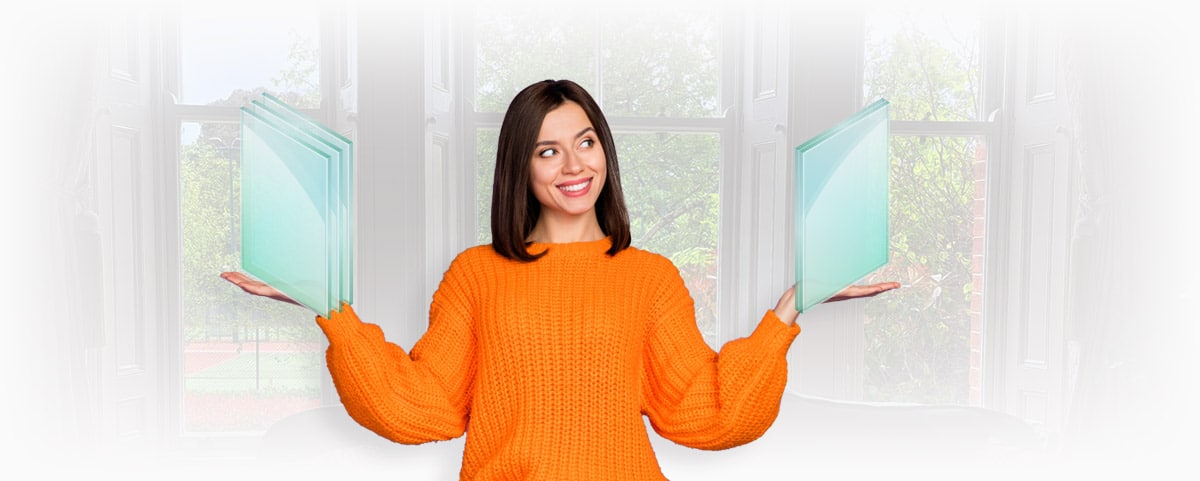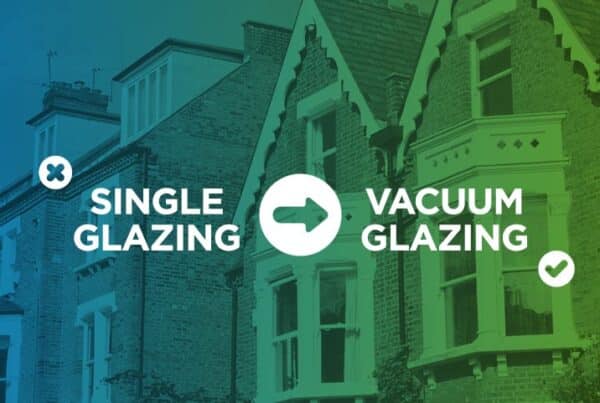Vacuum Glazing or Triple Glazing?
When it comes to high-performance glazing, two of the most advanced technologies available today are vacuum glazing and triple glazing. Homeowners and businesses looking to improve energy efficiency, reduce heat loss, and enhance insulation must decide between these two options. But which one offers the best balance of performance, cost, and sustainability? Let’s compare the two in detail.
What is Vacuum Double Glazing?
Vacuum glazing (or vacuum-insulating glazing) is a cutting-edge energy-efficient window glass technology that consists of two glass panes separated by a 0.1mm vacuum-sealed gap. This vacuum acts as an insulating barrier, drastically reducing heat transfer. Since there is no air or gas between the panes, vacuum glazing achieves exceptional thermal performance (similar to triple glazing) with a very thin profile of only 7.7mm, similar to single glazing.
Key Benefits of Vacuum Glazing:
Superior thermal insulation – Reduces heat loss more effectively than traditional glazing options. A low U-value of 0.7 is 8 times better than single glazing (5.8).
Slimmer profile – Ideal for period homes and buildings where the glass can be retrofitted into the authentic timber sash windows.
Designed for heritage or conservation – vacuum glazing like Fineo is perfect for listed buildings and conservation projects. The glass complies with building regulations, delivers comfort while preserving the original authentic window frames.
Improved sound insulation – Helps block external noise due to its vacuum-sealed design. Ideal for busy traffic areas where maintaining the original frames is desired.
Long lifespan – Vacuum-sealed units do not degrade over time like gas-filled units. Fineo has a 20 year warranty with an expected lifespan of 60+ years. It is also the only VIG manufactured in Europe with CE marking.

What is Triple Glazing?
Triple glazing consists of three glass panes separated by two gas-filled layers, typically argon or krypton. The additional layer improves thermal insulation compared to double glazing, making it a popular choice in colder climates.
Key Benefits of Triple Glazing:
- Better thermal insulation than standard double glazing.
- Enhanced security due to the extra pane of glass.
- Reduces condensation on windows in cold weather.
- Good noise reduction, though not as effective as vacuum glazing.
Lets compare Fineo Vacuum Glazing with triple glazing;
One of the most important factors when choosing between vacuum glazing and triple glazing is their U-value—a measure of thermal performance. The lower the U-value, the better the insulation.
Thickness | U-value W/m2K | Light Transmission | Sound Reduction Rw (C;Ctr) dB | Solar G-value | |
Triple Glazing | 36mm | 0.8 | 71 | 32 (-1; -5) | 0.61 |
Fineo Vacuum Glazing | 7.7 | 0.7 | 80 | 35 (-2; -5) | 0.62 |

Which is More Energy Efficient? Vacuum Glass or Triple Glazing
- Vacuum glazing provides better U-values in a thinner unit, making it highly efficient in both new builds and retrofitting projects.
- Triple glazing performs well but requires a thicker and heavier structure, which may not be suitable for all properties.
- For heritage buildings and conservation projects, vacuum glazing is the far superior option. And vacuum glazing like Fineo can be used in listed buildings to maintain historic frames.
Cost and Long-Term Value
While vacuum glazing costs more upfront due to its advanced technology, it offers long-term energy savings and durability. Triple glazing is typically more affordable but may run into issues due to its weight and increasing installation costs. Vacuum glazing has a lifespan of 60+ years and a 20 year warranty, which proves there is huge confidence in the advanced technology. Triple glazing usually comes with a much shorter warranty and as gas leaks out the quality degrades rapidly.
Which Should You Choose?
- If you need maximum energy efficiency in a slim profile, vacuum glazing is the best choice.
- If budget constraints are a concern and weight is not an issue, triple glazing is a solid alternative.
- For homeowners in historic properties, vacuum glazing by far provides the benefits of modern high-performance glazing while maintaining the traditional window frames.
The Winner: Fineo Vacuum Glazing
Both vacuum insulated glass and triple glazing offer excellent energy efficiency, but vacuum glazing stands out for its thin design, superior insulation, and long-term performance. If your priority is achieving the best energy efficiency in a sleek, modern, and durable solution, vacuum glazing is worth the investment.
Get Expert Advice
Interested in upgrading to Fineo vacuum glazing? Contact us today to arrange a free quote or visit our approved installers page to find your nearest Fineo installer.




